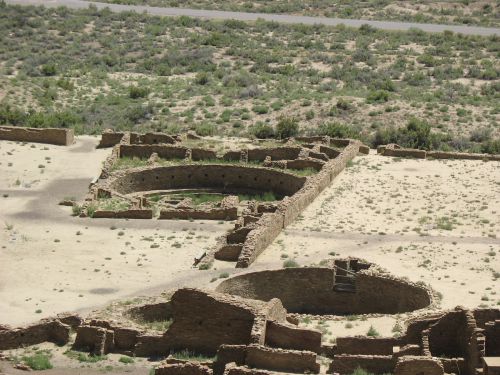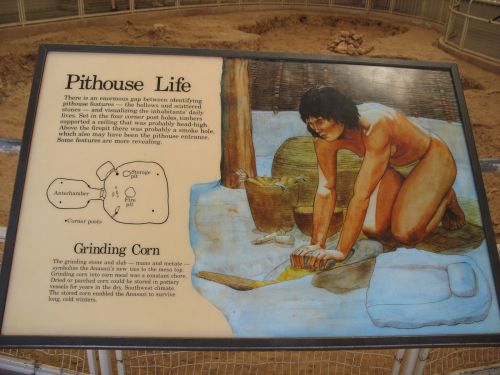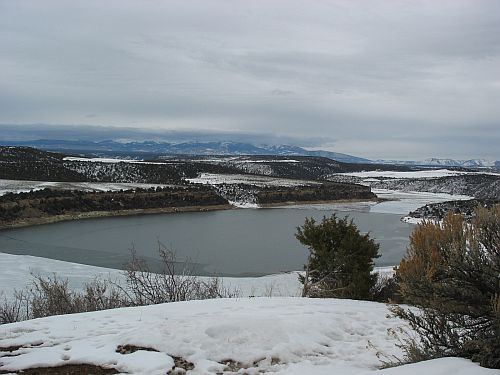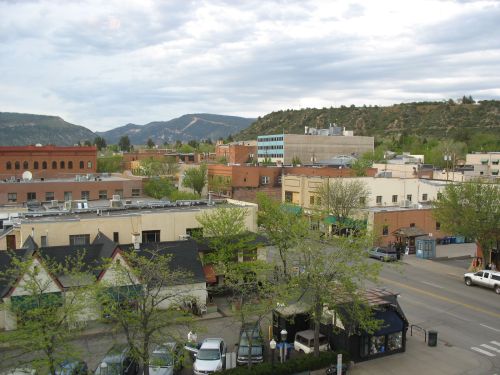Today is the winter solstice, which makes it the eleventh anniversary of this blog. Last year on this date I announced that I was scaling back to a more occasional posting schedule, and I’ve certainly stuck to that. I haven’t been doing a whole lot of reading specifically on Chaco Canyon recently, but I have actually been doing a fair amount of reading in general, so I thought today I would do a quick update on what I’ve been reading over the past year and how it relates to my (still rather vague) longer-term plans. I ordinarily write about archaeoastronomy on the solstices, but I don’t have much to say about it right now so this will be a more general post.
My reading over the past year falls into a few clear categories. I’ve actually generally been reading books and articles from different categories simultaneously (in parallel, as it were), rather than sequentially, but for purposes of summarizing here I think it makes more sense to discuss each category individually instead of trying to reconstruct a chronological sequence. The main categories have been:
- Medieval history
- Nineteenth-century US history
- Ethnographic and historical background on specific places I’ve visited this year
- Miscellaneous history/ethnography/archaeology of other places or peoples
- The Bible and related scholarship
Obviously these categories have a lot in common, and in general my reading falls within a pretty narrow range of nonfiction genres. Still, there’s a lot of diversity even within that narrow range, and many of the books I’ve read this year have significantly influenced my thinking on a range of issues. I’ll give brief overviews of the categories, the specific works I’ve read within each, and my general impression of them below. These overviews are much less detailed than a true review would be, and I may get around to doing longer reviews of some of them (probably not all) at some point. Anyway, here we go.
Medieval History
As I’ve mentioned before, for as long as I’ve been doing this blog I’ve been reading whatever I can find on developments throughout the world that were roughly simultaneous with the florescence of Chaco Canyon (roughly AD 800–1250, with the main peak around AD 1050–1150). In some cases this was to gain more information on societies that interacted directly with the Chacoans, but in most cases it was just to get a broader sense of the global context of Chacoan times. It was a very dynamic, fascinating era, in a lot of ways. I learned a lot through reading articles, but over time I came to realize that to get a real good sense of many of these developments I would really need to read books. Several of the books I read this year covered this period, and were very interesting in shaping my thinking about it.
These books included William Jordan’s Europe in the High Middle Ages, Jean Gimpel’s The Medieval Machine, David Howarth’s 1066: The Year of the Conquest, and Janet Abu-Lughod’s Before European Hegemony. Of these, Abu-Lughod’s was probably the most influential on my thinking, as she tries to more or less explicitly extend the “World Systems Theory” approach to modern capitalist society back into the middle ages, particularly the period AD 1250–1350. She posits that a comparable but different world system operated at this time, in which Europeans were active but marginal participants, and the main focal points were the Middle East, southern India, and China. It’s a convincing case, though it was written in 1989 and some of the argumentation feels a bit dated today (opposing a Eurocentric approach to economic history was much more controversial then than it is now!). Reading this book led me to Eric Wolf’s Europe and the People without History, which I’ve only recently started but clearly has some ideological overlap, though it focuses on a slightly later period.
Of the other books, the Jordan is a pretty workmanlike introduction to the period (part of the same series as Chris Wickham’s The Inheritance of Rome, about the preceding period, but not groundbreaking in the same way). Howarth’s is a popularized account that’s a fun read though I don’t know how seriously it’s taken by academic historians. He devotes particular attention to the nautical aspects of the Norman Conquest, which were quite significant in his telling. Gimpel’s book is fascinating in showing how much automation and “industrial” production were a factor in the medieval economy, which really cuts against the stereotypical image of the middle ages.
Nineteenth-Century US History
My interest in this period grew out of my interest in indigenous history and how the current Native American societies got from their precontact state to where they are today. This is a newer area of intensive reading for me in some ways, and was a particular focus this year. One book I read was Kenneth Porter’s The Black Seminoles, which was really fascinating in its portrait of a distinctive group of mixed ancestry and complicated historical position.
More influential theoretically for me, though, was Elliot West’s The Contested Plains, about the Colorado gold rush in the 1850s and its effect on the Native groups of the Great Plains. West situates his account within what I suppose would be considered environmental history, but the focus is not so much on how people affected the land as how the land affected people. He also focuses equally on the Plains tribes and the white settlers, and shows how both were pursuing new visions of how to develop societies based on the resources of a spectacular but harsh country. He makes the crucial point that it all comes down to energy, and how it is extracted from the environment, but he (correctly) interprets “energy” much more broadly than people often do, for example giving much attention to how the horse allowed Plains people to unlock the energy of the grass all around them. It’s ultimately a tragic story of how the country couldn’t provide enough for both peoples to pursue their dreams simultaneously.
Next, I have recently started reading Daniel Walker Howe’s What Hath God Wrought, about the period between the War of 1812 and the Mexican War. I don’t have a lot to say about it so far but I’m really liking it.
Background on Places I’ve Visited
I did quite a bit of traveling this year, mostly to see family or for other obligations. As I like to do, though, I did some reading about the history and especially indigenous populations of many of the places I visited.
Two of the most important places for me this year were San Diego and Las Vegas, where my girlfriend spent significant amounts of time for work and I would visit her. I therefore read quite a bit about the Kumeyaay of the San Diego area, especially Lowell John Bean’s Mukat’s People and Richard Carrico’s Strangers in a Stolen Land, as well as Michael Connolly Miskwish’s Maay Uuyow: Kumeyaay Cosmology (so a bit of ethnoastronomy after all). I don’t have a whole lot to say about these, but they were interesting context for understanding that area. On Las Vegas, most of what I read was in the form of articles rather than books, and mostly about the so-called “Virgin Anasazi,” Puebloan people contemporaneous with Chaco and similar in some intriguing ways. This is a line of reading I intend to pursue further, and will likely write about here in more depth.
I also went to Hawai’i for the first time this year, specifically to Maui for my girlfriend’s dad’s wedding. My mom had recently gone to Hawai’i herself not too long ago, and she lent me Phil Barnes’s A Concise History of the Hawaiian Islands for background reading. It was interesting, but again not something I have a lot of well-formed thoughts about at this point.
Miscellaneous History/Ethnography/Archaeology
This is mostly basic introductory reading about various areas and societies that piqued my interest this year for various reasons (aside from personal visits). Books in this category include Kenneth Ames and Herbert Maschner’s Peoples of the Northwest Coast: Their Archaeology and History, Robert McGhee’s Ancient People of the Arctic, and Irving Rouse’s The Tainos: Rise and Decline of the People Who Greeted Columbus. I don’t have a whole lot to say about these, but the McGhee book in particular is exceptionally well-written as popularized archaeology goes and describes a really fascinating and mysterious society. I recommend it highly to anyone interested in that kind of thing.
The Bible
Finally, one project I set myself this year, largely separate from my other reading, was to read through the whole Bible. I’ve been interested in it for a long time, and so I had been vaguely thinking of doing this for a while and this year was just when I decided to go for it. I read the Old and New Testaments in the King James Version, which took me just about six months (in parallel with my other reading). It’s really fascinating in a lot of ways to see what this enormously influential book actually says, even for a generally non-religious person like me. I’m currently reading the Apocrypha, also in the KJV, which is also interesting, and when I finish that I’ll move on to other related literature, possibly Josephus or some of the Pseudepigrapha. Eventually I’d like to read the Qur’an as well.
As context for this reading, I’ve also been reading various modern scholarship on the Bible and related topics. This is more “casual” reading than I generally have done for other topics, so I haven’t been tracking it closely or recording it on my reading list. It’s a really fascinating world of scholarship, though, with a lot of parallels to the other reading I do but with an immense depth of time and commitment that is essentially unrivaled in the Western scholarly tradition. I’ve been thinking about writing up some of my thoughts about it at some point, possibly on a new blog of some sort.
So anyway, that’s what I’ve been up to. This blog has been relatively quiet, it’s true, but not because I haven’t been busy. I actually feel like I’m doing more and more productive reading than I have for a long time, even if the results from it may take a while to gestate. Chaco may not be my main focus on the moment, but it too is in the background and I’ll come back to it at some point. Happy Solstice.























